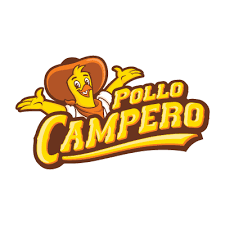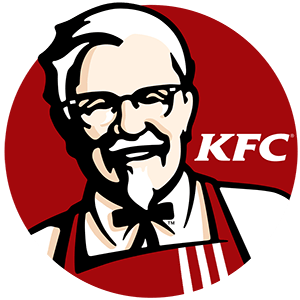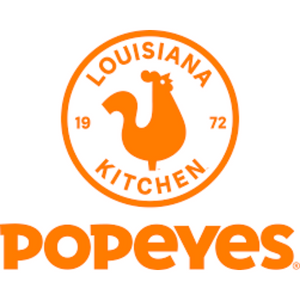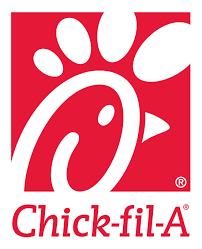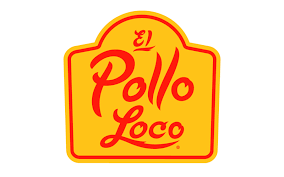Pollo Campero Franchise in 2025: Costs, Fee & FDD
Discover why Pollo Campero stands out in the fast-casual chicken industry. Learn about its unique flavors, growth potential, and franchise support system to see if this investment is the right fit for you.

Table of Contents:
Pollo Campero is a globally recognized fast-casual restaurant franchise that started in 1971 in Guatemala, founded by the Gutierrez family. Known for its flavorful fried and grilled chicken, the franchise has become a favorite in Latin American cuisine, blending traditional flavors with modern food service. Pollo Campero has grown from a local family business into an international brand, positioning itself as a key player in the competitive chicken restaurant industry. Their unique recipes and commitment to quality have made them a household name, particularly within Hispanic communities.
The franchise’s core product is its famous fried and grilled chicken, marinated with a blend of Latin spices, which gives it a distinct taste. Alongside the chicken, Pollo Campero offers side dishes like plantains, yuca fries, and empanadas, catering to customers looking for both hearty meals and snack-sized bites. Their menu also features salads and sandwiches, appealing to a wide range of customers, but their primary audience is families and individuals looking for authentic, flavorful meals.
In terms of scale and scope, Pollo Campero operates over 350 locations worldwide, with a strong presence in the U.S., Central America, and other international markets. The brand is particularly successful in countries like Guatemala, Honduras, and the U.S., with its daily customer base numbering in the tens of thousands. Pollo Campero continues to expand its reach, serving diverse communities and offering a taste of Latin culture through its food.
As a franchise, Pollo Campero provides solid support for its franchisees, offering comprehensive training programs that cover everything from operations to marketing. New franchisees are supported through site selection, restaurant design, and supply chain management, ensuring that they have the resources to succeed. The franchise also emphasizes strong community engagement, often hosting events and promotions tailored to local markets, which helps franchisees connect with their customers on a deeper level.
Pollo Campero Franchise Insights
- Pollo Campero’s distinct Latin-inspired flavors set it apart from typical fast-food chicken chains, making it a standout in the market.
- The brand has a rich cultural heritage, often positioning itself as a taste of home for many of its customers, particularly those with roots in Latin America.
- Franchisees benefit from a strong sense of community engagement, with Pollo Campero frequently hosting local events and promotions that resonate with the surrounding population.
- The franchise’s flexible menu, offering both fried and grilled options, appeals to a wide range of customers, including those looking for healthier alternatives.
Pollo Campero Franchise Key indicators
Growth YOY (%)
37%
vs industry 0%
Total U.S. Franchised Units
15
3-Year Failure Rate
0%
vs industry 10%
Sales-to-Investment ratio
1.6:1
How much does it cost to open a Pollo Campero franchise?
Understanding the potential investment size and capital requirements is crucial when considering opening a Pollo Campero franchise. These financial commitments, including initial franchise fees, equipment costs, and ongoing operational expenses, impact the feasibility and profitability of the venture. Thoroughly evaluating these factors ensures that potential franchisees are prepared for the financial responsibilities and can make informed decisions about their ability to sustain and grow the business, ultimately contributing to long-term success.
Min & Max Investment
Opening a Pollo Campero franchise involves several key costs, which are outlined in Item 7 of the Franchise Disclosure Document (FDD). You can see a breakdown of the costs to open a Pollo Campero below from the most recent Item 7 below:
Type of Expenditure
Minimum Investment
Maximum Investment
Initial Franchise Fee
$30,000
$40,000
Rent
Variable
Variable
Real Property: Building/Build-Out Costs
$840,000
$1,500,000
Real Property: Site Development Costs
$25,000
$800,000
Soft Costs
$50,000
$250,000
Additional Development Costs
$50,000
$125,000
Restaurant Furniture, Equipment, Fixtures, Décor
$295,000
$600,000
Signs
$100,000
$120,000
POS System
$40,000
$60,000
Opening Inventory
$16,500
$31,500
Business and Operating Permits
$2,500
$5,500
Initial Training Travel & Living Expenses
$12,900
$37,500
Insurance
$10,000
$25,000
Uniforms
$1,500
$2,000
Miscellaneous Opening Costs
$5,250
$23,500
Marketing Start-Up Expenditure
$40,000
$80,000
Additional Funds – 3 Months
$36,000
$50,000
Total
$1,554,650
$3,750,500
Item 7 in the Franchise Disclosure Document (FDD) is the “Estimated Initial Investment” section. It outlines the total costs a franchisee can expect to incur when starting a franchise, including the initial franchise fee, equipment, inventory, real estate, and other startup expenses. This section is crucial because it provides potential franchisees with a detailed understanding of the financial commitment required, helping them assess affordability and plan their investment strategy effectively.
Required Capital
To open a Pollo Campero franchise, the required capital involves both initial investment costs and net worth requirements set by the company. Let’s take a closer look below:
- Initial Investment The total estimated initial investment typically ranges from $1.55 million to $3.75 million. This includes startup costs such as the franchise fee, construction, equipment, initial inventory, and funds for operating expenses. Assuming that you will finance your franchise investment, you should plan to have 20% of the total investment amount in the form of equity (cash) for the investment.
- Liquid Assets Requirement Pollo Campero usually requires franchisees to have a minimum of $500,000 in liquid assets. This ensures that the franchisee has the necessary financial resources to manage early-stage operations and cover any unexpected expenses.
- Net Worth Requirement The franchise also evaluates the overall net worth of the potential franchisee. While specific requirements can vary, it is generally recommended that franchisees have a net worth of at least $1 million to $2 million, including assets like real estate, investments, and other personal holdings, minus liabilities.
How much does a Pollo Campero franchise owner make?
Calculating the salary of a Pollo Campero franchise owner involves analyzing gross sales to determine total revenue, assessing operational efficiency to understand profit margins, and accounting for franchisor fees and additional expenses such as rent, utilities, and payroll. Effective management of these factors can significantly impact the profitability and financial success of a Pollo Campero franchise owner. This comprehensive financial analysis helps estimate net profits, from which the owner’s salary can be derived. A clear understanding of these factors ensures accurate salary projections and financial planning for sustainable business operations.
Pollo Campero Revenue & Gross Sales
Based on the most recent analysis, Pollo Campero franchises achieved a median gross sales of $4,278,307, reflecting the brand’s strong consumer demand and ability to generate substantial revenue. This performance highlights the franchise’s appeal, particularly within its core market, and its potential for significant financial returns for franchisees.
Which key factors impact the average revenue performance of Pollo Campero franchisees?
Several factors likely contributed to the performance of U.S. Pollo Campero franchisee median gross sales this past year. One key factor is the brand’s consistent focus on delivering unique, Latin-inspired flavors that resonate with a growing, diverse customer base, particularly in Hispanic communities. Additionally, the rise in demand for convenience, including takeout and delivery options, has further boosted sales, as Pollo Campero adapted well to shifting consumer preferences. Effective marketing campaigns, coupled with strategic expansions into high-traffic urban areas, also helped increase visibility and foot traffic. Lastly, the franchise’s emphasis on operational efficiency and customer service likely played a role in maintaining strong repeat business, driving revenue growth.
Pollo Campero Franchise Operational Costs
Operational costs for a franchise like Pollo Campero are the ongoing expenses necessary to manage day-to-day operations and ensure smooth business functionality. For a Pollo Campero franchise, operational costs include:
- Food and Beverage Costs The expenses for purchasing raw ingredients like chicken, spices, sides, and beverages required to prepare the menu offerings.
- Labor Costs Wages, salaries, and benefits for employees, including kitchen staff, cashiers, and management involved in daily restaurant operations.
- Rent or Mortgage Payments The cost of leasing or owning the restaurant location, including monthly rent, property taxes, and insurance.
- Utilities Ongoing expenses for electricity, water, gas, internet, and other utilities needed to keep the restaurant running efficiently.
- Maintenance and Repairs Costs for routine maintenance and repairs for kitchen equipment, building upkeep, and unexpected equipment failures.
- Supplies and Inventory This includes kitchen supplies, cleaning products, uniforms, and general inventory management necessary to maintain stock levels.
- Technology and Equipment Costs for maintaining and upgrading point-of-sale systems, kitchen equipment, and any other technology used in operations.
- Miscellaneous Costs Other expenses like licenses, permits, legal and accounting services, and any additional fees associated with running the business.
Carefully managing these operational costs is vital for the long-term financial success of your Pollo Campero franchise.
Pollo Campero Franchise Fees
Owning a Pollo Campero franchise comes with distinct responsibilities and costs compared to running an independent business. Like most franchises, Pollo Campero requires its franchisees to pay ongoing fees to maintain operations. These fees include:
- Royalty Fee This is a weekly fee paid to Pollo Campero, typically 5% of the restaurant’s weekly gross sales. It covers the continued use of the brand and operational systems.
- Additional Fees Franchisees may also incur miscellaneous fees for items such as insurance, legal services, and local permits, which can vary by location.
These ongoing fees are essential when planning the financial aspects of owning and operating a Pollo Campero franchise. They help cover the costs of brand support, marketing, and operational assistance provided by the franchisor.
Pollo Campero Franchise Earnings
As a Pollo Campero franchisee, based on the median gross sales of $4,278,307, the potential for generating substantial revenue is clear. Franchisees operating within this range can expect healthy returns, especially when focusing on maintaining efficient operations and managing costs effectively. For an owner-operator, earnings are typically higher due to the hands-on involvement in the day-to-day management of the franchise.
With an owner-operator median earnings of $641,746, franchisees who actively manage their Pollo Campero location can achieve solid financial rewards. This figure represents the potential income after accounting for operational costs and franchise fees, highlighting the profitability of a well-run restaurant. By carefully managing food costs, labor, and other key expenses, franchisees can maximize their earnings and ensure long-term success.
How to Open a Pollo Campero Franchise
Here’s an overview of the process and steps involved in becoming a Pollo Campero franchisee, starting from the initial inquiry to the opening of your restaurant:
- Initial Inquiry You or your franchise specialist submits an initial inquiry basic information about your interest and background. You should also conduct thorough research on the franchise, including seeing all of the information available on the Vetted Biz franchise intelligence platform, including access to the most recent Franchise Disclosure Document (FDD).
- Franchise Application After the inquiry, you’ll be asked to complete a more detailed franchise application. This application helps Pollo Campero assess your background, financial qualifications, and business goals.
- Initial Review and Interview Once your application is reviewed, you may be invited for an initial interview. During this step, the franchise team will discuss your goals, expectations, and the overall franchise opportunity to ensure alignment.
- Financial Disclosure and Evaluation You will receive the Franchise Disclosure Document (FDD), which details all legal and financial obligations. You’ll also need to submit proof of liquid assets and net worth for evaluation.
- Site Selection and Approval If both parties agree to move forward, Pollo Campero will assist you in selecting and approving a suitable location. Real estate teams and consultants will guide you through this critical process.
- Training Program Once the location is secured, you’ll undergo a comprehensive training program, covering operations, management, customer service, and marketing strategies. Training can last between 4 to 6 weeks.
- Restaurant Construction and Setup While training occurs, the build-out of your restaurant begins, including construction, design, and installation of equipment.
- Pre-Opening Support Before opening, Pollo Campero provides pre-opening support, including local marketing initiatives, staff hiring assistance, and supply chain setup.
- Grand Opening Once all the operational pieces are in place, the grand opening of your Pollo Campero restaurant is scheduled. The franchisor continues to offer support and guidance as you begin operations.
Pros & Cons
Pros
Strong Brand Recognition: Pollo Campero has a loyal customer base, especially within Hispanic communities, providing a solid foundation for attracting repeat business.
Unique Menu Offering: The franchise stands out in the fast-casual chicken market with its Latin-inspired flavors, giving you a distinct competitive edge.
Growing Market Presence: With over 350 locations worldwide and a strong expansion strategy, Pollo Campero continues to grow, offering potential for long-term success.
Proven Business Model: The franchise’s established business model and operational efficiency provide franchisees with a clear roadmap to profitability.
Cons
High Initial Investment: The estimated initial investment of $1.55 million to $3.75 million can be a barrier for those with limited capital.
Competitive Market: The fast-casual chicken industry is competitive, with many well-established brands like KFC and Chick-fil-A as rivals.
Operational Demands: Running a restaurant requires significant time and effort, particularly for owner-operators, which may not suit everyone’s lifestyle.

